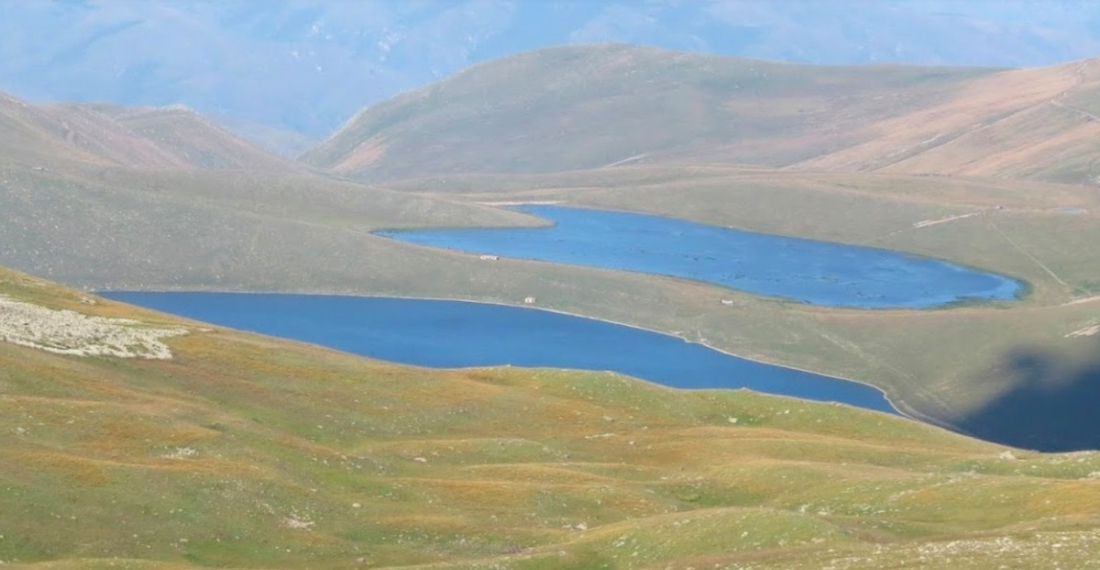One week on from the start of the dispute on the Armenia-Azerbaijan border, the situation remains without a resolution. In this opinion piece for KarabakhSpace.eu, Fuad Shahbazov looks at what is driving Azerbaijani actions on the ground and in the diplomatic arena, and the possibility of escalation.
Half a year after the Russian-brokered ceasefire agreement was signed between Azerbaijan and Armenia ending the 44-day war in Karabakh, peace in the complex region is not on the horizon. A new stage of discontent and harsh statements came last week after Azerbaijani Armed Forces reportedly crossed the border with Armenia in the Syunik province and advanced around 3 kilometres by Sev Lake. Yerevan dubbed this action as an explicit provocation and an attempt to occupy Armenian territory, whereas Baku denied the accusations, stating that Azerbaijani border guards established a military control point at the heights around the lake without advancing into Armenian territories. A day later, another official statement issued by the Ministry of Foreign Affairs of Azerbaijan said that there is no reason for panic as border demarcation/delimitation process is a complicated process.
However, there seems to have been no real infiltration into Armenian territory as had been described in the local media. From the point of view of Armenia, Azerbaijan sees the current political turmoil within the country as an opportunity to increase leverage over the situation and take control of strategic heights in the border. However, the fact that the military posts in the heights around the lake have been established by the border guard service of Azerbaijan as opposed to regular army units, and that they have not moved further since, questions such accusations.
From the point of view of Azerbaijan, the debates about an incursion into sovereign Armenian territories are baseless as the border demarcation process between Azerbaijan and Armenia is underway in accordance with the 10 November ceasefire agreement. It is reasonable that Azerbaijan eyes border demarcation/delimitation with Armenia on the basis of Soviet-era maps (from 1987) according to which approximately 30% of Sev Lake (Qaragol state reserve) is labelled as Azerbaijani territory.
The border demarcation process in the post-Soviet region – and particularly in the Caucasus – has always been a problematic issue since the borders of all Soviet republics were based on the maps of the Russian Empire, where less attention was given to the empire’s internal borders. Therefore, it should not come as a surprise that nearly all former Soviet republics have made territorial claims against each other as it is usually unclear where the exact border lies. As a result, with the dissolution of the Soviet Union, the region quickly became plagued with long-term ethnic and border conflicts that resulted in dramatic human casualties. It is worth noting that border demarcation in the South Caucasus is very challenging even between friendly states like Georgia and Azerbaijan as was seen in 2018.
In this context, referring to the Soviet-maps in its possession, Azerbaijan wanted its internationally recognised borders to be demarcated, and for this purpose, deployed its troops to the area. Here it needs to be emphasised that in accordance with the ceasefire agreement, Armenia is also supposed to retreat from 7 villages (Sofulu, Kheyrimli, Gizilhajili etc.) in the northern Gazakh district that fell under Armenian control in March 1990 as a result of its incursion into Azerbaijan’s sovereign territories. However, little has been done on this issue since the agreement entered into force largely due to the passive mediation of Russia and amid tense relations between Baku and Moscow.
By moving the troops along the border with Armenia, Azerbaijan seeks to put maximum pressure on them, presumably to get concessions on some of the vitally important issues previously negotiated in the ceasefire agreement, such as the Nakhchivan corridor via the Syunik province. With the border situation exposing Armenia’s inability to expel the Azeri border guards from a 3km area, the current crisis may be fatal for Nikol Pashinyan’s position ahead of the June elections. But equally, the fact that the additional build-up of Russia’s military in the Syunik province in April and Yerevan’s public appeal to the Collective Security Treaty Organization (CSTO) did not bring any tangible results will not strengthen the positions of Armenia’s pro-Russian groups, led by the former presidents, Robert Kocharyan and Serzh Sargsyan.
Although, unofficial sources in Armenia and Azerbaijan reported that the bilateral negotiations were held between the two countries on 16 May to address the border issue, Nikol Pashinyan, during the Security Council’s meeting on 17 May, said that “there have been no major changes in military-political terms, some groups have left, but the situation has not changed”. Moscow has tried to remain neutral and has offered its help in “mediation” via official channels but to no avail.
Azerbaijan intends to return to the borders of 1988 – as per the Soviet-era maps – simultaneously calling the Armenian authorities not to react inadequately as it is a very routine process. Taking into consideration the current strained relations between Moscow and Baku, and with the Russian peacekeeping mission in Karabakh heading nowhere, Azerbaijan is likely to follow its own path in the region. It is most likely that the border crisis will be resolved very soon without provoking an armed struggle, as this would largely damage the ceasefire agreement and cast a shadow over Russia’s image as a guarantor of regional security.
Source: This op-ed was prepared for KarabakhSpace.eu by Fuad Shahbazov, an independent analyst based in Baku, Azerbaijan. @fuadshahbazov
Photo: Sev Lake; Free Voice



